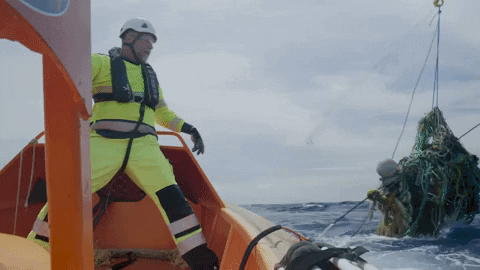The number one reason we’re developing ocean cleanup technology is to stop the destruction plastic is causing to hundreds of species worldwide. Making sure our systems themselves do not negatively impact (marine) life is therefore naturally our number one design driver.
After completing the final design of our first cleanup system in 2017 we contracted the independent environmental consultancy company CSA Ocean Sciences to conduct an Environmental Impact Assessment. The study can be found here. Although it is very hard to assess the impact of something that has never been done before, the researchers studying the design for the EIA did not identify any high risks to marine life.
The ocean cleanup systems are designed to be inherently safe for marine life in four ways. Firstly, the systems move through the ocean at extremely low speeds (less than 10 cm per second) – slow enough for creatures to swim away. Secondly, because the screen is impermeable, the current will flow underneath the screen, taking away organisms that can’t actively move, while the plastic (which floats) remains inside the system. Thirdly, because the screen is not a net, CSA also didn’t identify a significant entanglement risk. Finally, we only actually take out the plastic out of the water periodically, which means there will always be people present to check for marine life before we lift the plastic out of the water.
Having said that, we continue to follow a precautionary approach, meaning we will actively monitor the interaction between the system and marine life as we will have the first cleanup system in the Great Pacific Garbage Patch.
